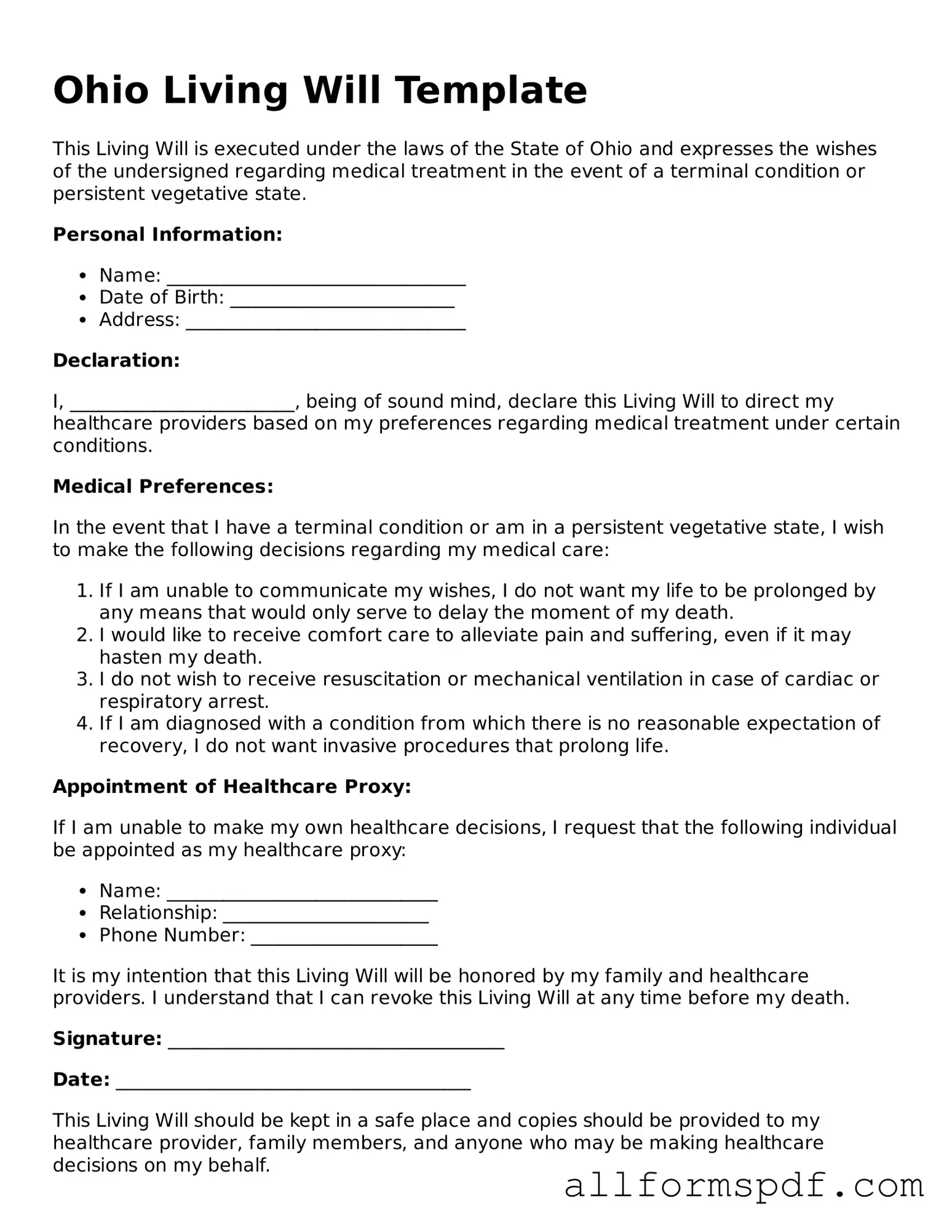Filling out a Living Will in Ohio can be a crucial step in ensuring your healthcare wishes are respected. However, many individuals make common mistakes that can lead to confusion or even unintended consequences. Here are ten mistakes to avoid when completing this important document.
One frequent error is not being specific about medical preferences. When outlining your wishes, it’s essential to clearly state what types of treatments you would or would not want. Vague language can lead to misunderstandings among your healthcare providers and loved ones.
Another mistake is failing to discuss your wishes with family members. It’s vital to have conversations with those who may be involved in your care. This helps ensure everyone understands your preferences and can advocate for them if necessary.
Many people also overlook the importance of designating a healthcare proxy. This individual will make decisions on your behalf if you are unable to do so. Choose someone you trust and ensure they are willing to take on this responsibility.
Additionally, not signing and dating the document is a common oversight. A Living Will is not valid unless it is properly signed and dated. Make sure to follow the instructions carefully to avoid this pitfall.
Some individuals forget to review and update their Living Will as circumstances change. Life events, such as marriage, divorce, or a significant change in health, may require updates to your preferences. Regularly revisiting your Living Will ensures it remains aligned with your current wishes.
Another mistake is not having witnesses when required. Ohio law mandates that a Living Will must be signed in the presence of two witnesses who are not related to you. Failing to meet this requirement can invalidate the document.
People often make the mistake of using outdated forms. Laws and regulations can change, so it’s essential to ensure you are using the most current version of the Living Will form. Check with reliable sources to obtain the latest information.
Some individuals may also overlook the importance of clarity in their writing. Ambiguous terms or complex language can lead to confusion. Aim for straightforward language to clearly express your intentions.
Another common error is not considering all possible scenarios. Think through various situations that may arise and how you would want them handled. This comprehensive approach can help prevent future disputes or confusion.
Lastly, neglecting to store the document properly can lead to significant issues. After completing your Living Will, keep it in a safe yet accessible location. Inform your healthcare proxy and family members where to find it in case of an emergency.
By avoiding these common mistakes, you can ensure that your Living Will accurately reflects your wishes and provides clarity for your loved ones and healthcare providers. Taking the time to complete this document thoughtfully can bring peace of mind to you and your family.
